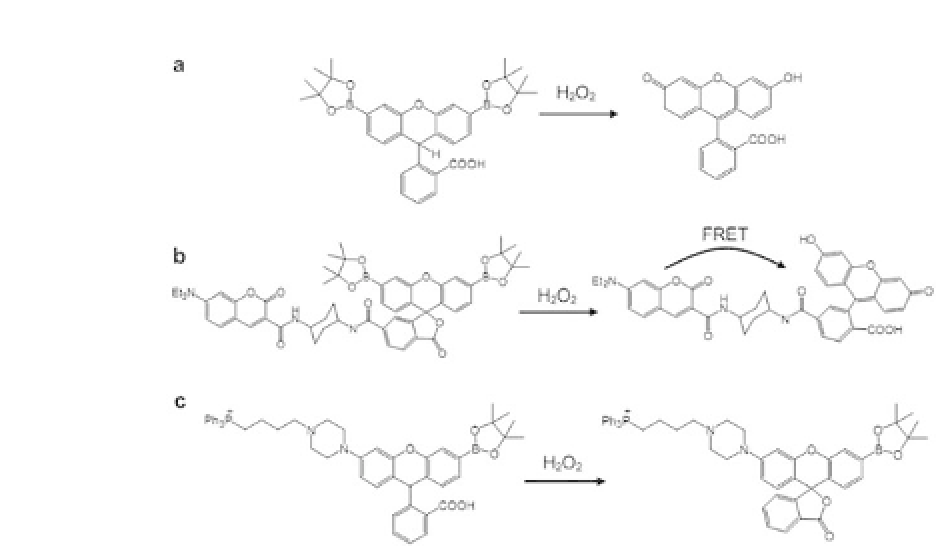Biomedical Engineering Reference
In-Depth Information
Figure 42.3.
Boronate-protected fluorescent probes for imaging of
hydrogen peroxide.
A rationally designed Peroxyfluor-1, in which installation of
boronic ester groups renders the parent molecule nonfluorescent,
reacts with hydrogen peroxide with excellent selectivity, leading to
regenerationofstrongfluorescence.Aratiometricfluorescentprobe
for hydrogen peroxide was also developed based on modulating flu-
orescence resonance energy transfer (FRET) in a two-fluorophore
cassette comprised of coumarin- and boronate-protected fluores-
cein.Uponselectivereactionwithhydrogenperoxidetogenerateflu-
orescent fluorescein moiety, fluorescein shows a strong absorption
in the coumarin emission region. The excitation of coumarin results
in enhanced fluorescence from fluorescein by FRET. This ratiomet-
ric probe allows accurate and quantitative detection of hydrogen
peroxide. The researchers also designed and developed a targetable
fluorescent probe for imaging of mitochondrial hydrogen peroxide
in living cells. The targetable fluorescent probe was designed to
contain both mitochondrial-targeting moiety and a hydrogen
peroxide-responsive element. The strategy of fluorescence imaging
of mitochondrial hydrogen peroxide is based on the use of phos-
phonium head groups that have been used to deliver antioxidants
to mitochondria. This probe was capable of imaging changes in the








Search WWH ::

Custom Search